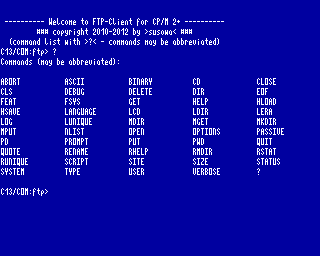- Details
- Geschrieben von Super User
- Hauptkategorie: Magazines
- Kategorie: CFOG's PIP
- Veröffentlicht: 30. November 1987
- Zugriffe: 40052
CFOG's PIP, October 1988, Volume 7 No. 5, Whole No. 67, page 82
MS-DOS: Where It's Going and What to Do About It
by Bill Kuykendall
[This initially appeared as a message on CFOG II, our remote access system. Members who are not using CFOG II are missing out on the earliest access to new software, the best place to get questions answered (there are callers who NEVER come to a meeting, even non-members including Eric Meyer, author of VDE), and a lot of good information that never winds up in PIP. -- bhc]
Several years ago I was delighted with my Osborne and Televideo 64k Z80 machines. Imagine my delight when I discovered that I could buy a 16 bit version that would run much faster and could even address a full megabyte of memory! We all know the punch line, and you guys probably think I'm the only idiot left who would admit to having bought a CPM-86 computer.
In fact, CPM-86 WAS a giant leap forward from the 8bit world -- or at least it could have been if there had been any programs written to support it. Unfortunately, the CPM-86 computers became available at just about the same time IBM released its PC running MS-DOS. (CPM-86 was available for the PC too, but it cost more than MS-DOS and nobody bought it.)
The '286 machines have been here just about forever now it seems, but they're still relegated to running the old 8088 MS-DOS software. As of right now there is finally an operating system to take advantage of the '286 chip but there are still no programs because developers are waiting for the Presentation Manager to be completed and released. We're getting close... just a couple more months now.
An interesting thing has happened while we've waited. The '386 has been here for over a year and a half. Developers wishing to take advantage of its features have released a number of applications which run on top of good ole MS-DOS. Even IBM has joined the '386-only market with its Interleaf Publisher package. And Microsoft is running scared, working with all speed to beef up OS/2 to take advantage of the '386 chip.
There will undoubtably be OS/2 software for the '286. It's reported that $ 1/2 Billion has been spent on OS/2 software development already, and another $ Billion will be spent in the next 12 months. Some of that will be '286 compatible to be sure but more will take advantage of the '386. When '386 sales overtake '286 sales (early next year) you will see fewer and fewer '286 programs. Just about the time software developers begin to really understand and take advantage of OS/2's new features, the '286 market will be dead.
But you don't care about OS/2 at all. It costs 5-7 times as much as MS-DOS and requires $1000-2000 worth of additional hardware to even boot up. You'll continue to run good ole MS-DOS at home.
You won't see many new MS-DOS applications. The 8088 has gone the way of the 8080s and Z-80s of the past. You will see new '386 programs that run on top of MS-DOS. You probably won't see many '286 programs.
The moral of this story is this: If you want an 8088 processor the 80286 is faster. But if you want future software compatibility you'll need an 80386. The good news is that several manufacturers have announced low end '386-on-a-16-bit-bus versions which will be available next year in the $ 1000 (stripped) range. You may want to wait.




